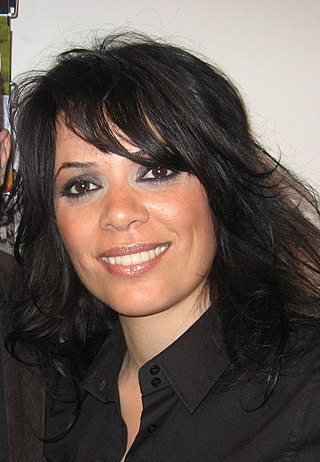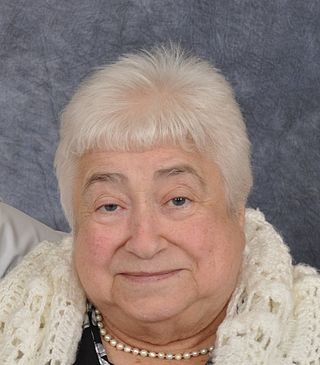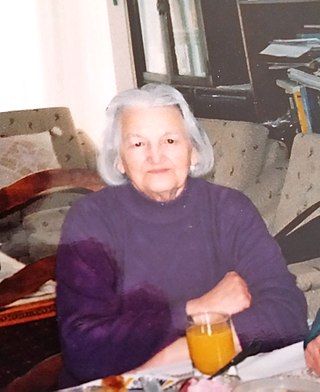Related Research Articles

The Romaniote Jews or the Romaniotes are a Greek-speaking ethnic Jewish community native to the Eastern Mediterranean. They are one of the oldest Jewish communities in existence and the oldest Jewish community in Europe. The Romaniotes have been, and remain, historically distinct from the Sephardim, some of whom settled in Ottoman Greece after the expulsion of Jews from Spain and Portugal after 1492.
Sephardic music is an umbrella term used to refer to the music of the Sephardic Jewish community. Sephardic Jews have a diverse repertoire the origins of which center primarily around the Mediterranean basin. In the secular tradition, material is usually sung in dialects of Judeo-Spanish, though other languages including Hebrew, Turkish, Greek, and other local languages of the Sephardic diaspora are widely used. Sephardim maintain geographically unique liturgical and para-liturgical traditions.

The history of the Jews in Greece can be traced back to at least the fourth century BCE. The oldest and the most characteristic Jewish group that has inhabited Greece are the Romaniotes, also known as "Greek Jews." The term "Greek Jew" is predominantly used for any Jew that lives in or originates from the modern region of Greece.

Yasmin Levy is an Israeli singer-songwriter of Judeo-Spanish music.

Jewish literature includes works written by Jews on Jewish themes, literary works written in Jewish languages on various themes, and literary works in any language written by Jewish writers. Ancient Jewish literature includes Biblical literature and rabbinic literature. Medieval Jewish literature includes not only rabbinic literature but also ethical literature, philosophical literature, mystical literature, various other forms of prose including history and fiction, and various forms of poetry of both religious and secular varieties. The production of Jewish literature has flowered with the modern emergence of secular Jewish culture. Modern Jewish literature has included Yiddish literature, Judeo-Tat literature, Ladino literature, Hebrew literature, and Jewish American literature.

Margalit Matitiahu is a poet in Ladino and Hebrew from Israel.

The history of the Jews in North Macedonia stretches back two thousand years, beginning during Roman antiquity, when Jews first arrived in the region. Today, following the Holocaust and emigration, especially to Israel, around 200 Jews remain in North Macedonia, mostly in the capital, Skopje and a few in Štip and Bitola.

The history of the Jews of Thessaloniki reaches back two thousand years. The city of Thessaloniki housed a major Jewish community, mostly Eastern Sephardim, until the middle of the Second World War. Sephardic Jews immigrated to the city following the expulsion of Jews from Spain by Catholic rulers under the Alhambra Decree of 1492. It is the only known example of a city of this size in the Jewish diaspora that retained a Jewish majority for centuries. This community influenced the Sephardic world both culturally and economically, and the city was nicknamed la madre de Israel.

Flory Jagoda was a Bosnian Jewish–born American guitarist, composer and singer-songwriter. She was known for her composition and interpretation of Sephardic songs, Judeo-Espanyol (Ladino) songs and the Bosnian folk ballads, sevdalinka. Her most famous song is the Hanukah standard, "Ocho Kandelikas."

The Jewish Museum of Thessaloniki is a museum in Thessaloniki, Central Macedonia, Greece presenting the history of Sephardic Jews and Jewish life in Thessaloniki.

Judaeo-Spanish or Judeo-Spanish, also known as Djudio and only recently Ladino, is a Romance language derived from Old Spanish.

Matilda Koen-Sarano, is an Israeli writer. Born to Turkish Jewish parents, she is one of the most widely known writers in the Ladino language.
Consuelo Luz Arostegui is an American singer. She performs and records as "Consuelo Luz" is known for her Ladino and Sephardic music.
Rebecca Camhi Fromer was an American playwright, historian and poet. Fromer co-founded the Judah L. Magnes Museum of Berkeley, California, in 1961 with her husband, Seymour Fromer. The museum, which is now called the Magnes Collection of Jewish Art and Life and became part of the University of California, Berkeley in 2010, houses more than 15,000 Judaica artifacts and manuscripts, the third largest collection of its kind in the United States.

Sarah Aroeste is an American singer and composer. Her music is often referred to as "feminist Ladino rock." She also writes books for children with Sephardic themes.
Bouena Sarfatty, married name Bouena Sarfatty Garfinkle was a Jewish Greek World War II partisan, a writer of verse, and a renowned needleworker.

Sarah Abrevaya Stein is a prominent American historian of Sephardic and Mediterranean Jewries.
Judith Rita Cohen is a Canadian ethnomusicologist, music educator, and performer. Her research interests include Judeo-Spanish (Ladino) songs; medieval and traditional music from the Balkans, Portugal, French Canada, and Yiddish; pan-European balladry; and songs from Crypto-Jewish regions in Portugal. She has received numerous research and travel grants to do fieldwork in Spain, Portugal, Morocco, Israel, Turkey, Greece, France, Belgium, Canada, and the United States, and has published many journal articles, papers, and book chapters. She plays a variety of medieval musical instruments, and sings and performs as part of her lectures and in concerts and solo recitals. She is also the editor of the Alan Lomax Spanish collection maintained by the Association for Cultural Equity.

Žamila Andžela Kolonomos was a Sephardi Jewish partisan, writer, academic, and political activist in what is now North Macedonia.
Zvi Hirsch Koretz, also written as Tzevi or SeviKoretz, was an Ashkenazi Jew who served as the Chief Rabbi of Saloniki's Jewish community from 1933 to 1945. His role as president of the Judenrat during World War II has been called into controversy, with many accusing him of being a Nazi collaborator.
References
- 1 2 3 Mitchell, Bruce. "Quinientos Anios Despues". Sefarad.org. Archived from the original on 2012-06-10.
- ↑ Kushner, Aviya. "Ladino Literature". My Jewish Learning. Retrieved 2021-02-17.
- ↑ "Poezias de mi vida / Rita Gabbaï-Tazartès". United States Holocaust Memorial Museum. Retrieved 2021-02-17.
- ↑ de Vooght, Marian (2020-01-28). "'No Longer the Other': How Holocaust Poetry Reclaims Identities". The Wire. Retrieved 2021-02-17.
- ↑ Eliakim, Vital (2005-06-01). "Dictionnaire basique Ladino-Grec - Rita Gabbaï-Tazartes". La Lettre Sépharade en ligne (in French). Archived from the original on 2021-02-28. Retrieved 2021-02-17.